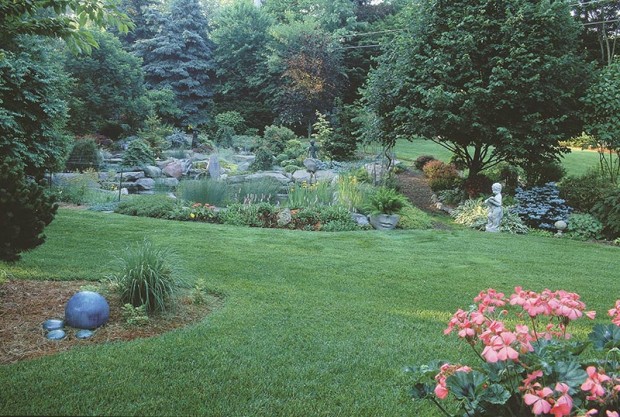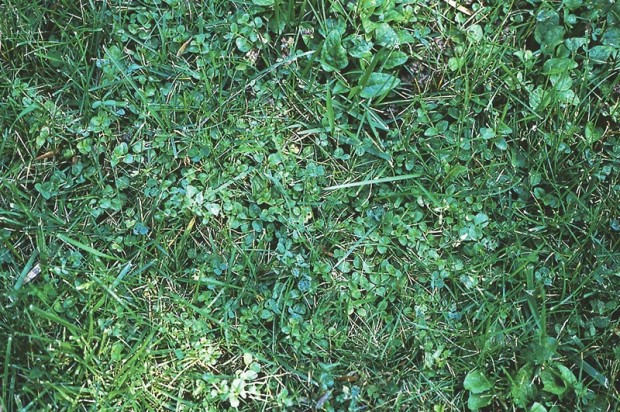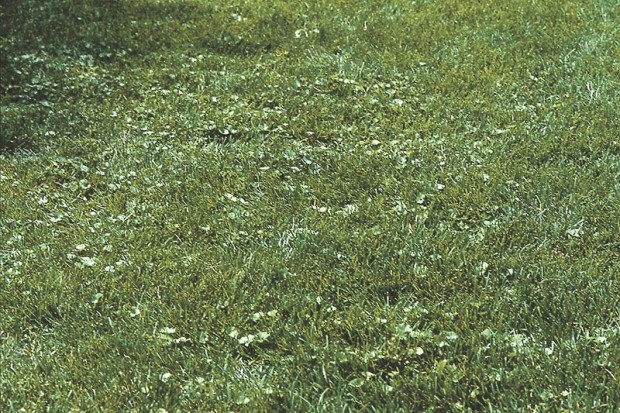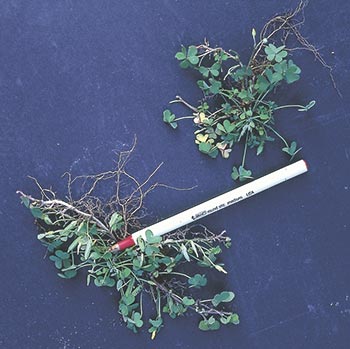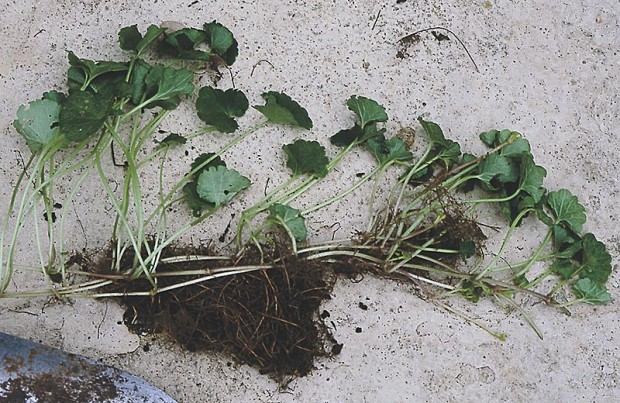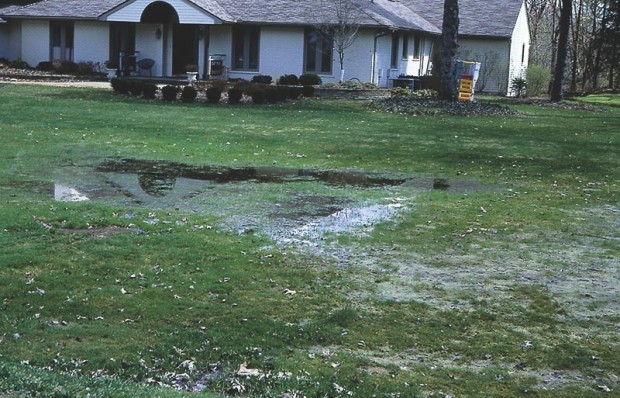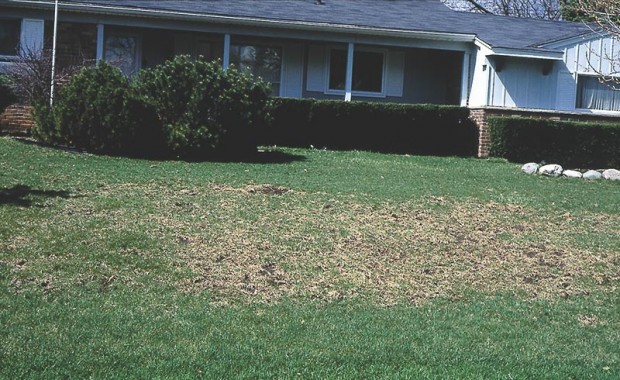In my lawn, there are random brown spots about the size of a tennis ball or slightly larger. This condition only seems to happen during mid to late summer, nothing earlier. I fertilize about every six weeks and mow weekly, never cutting more than 1/3 of the grass blade. I don’t have pets, though there are plenty of squirrels and birds. I have a lawn irrigation system that I operate on designated days with about 20 minutes in each zone. What is causing the brown spots and how do I eliminate them?
What a great analysis of your lawn problem; it shows you pay attention to details in the management of your turf. It appears you have a fungal disease called “dollar spot,” so named because the sunken dead spots are about the size of a silver dollar. The spots are about 2 to 3 inches wide, and several spots may grow together, killing a larger area. The fungus can survive in an unseen dormant state in infected turf. When the daytime temperatures reach 60 to 80 degrees, it resumes growth and infects healthy grass blades. Dollar spot occurs when a combination of warm days and cool nights produce dew on the lawn in the morning, which was our mid to late summer pattern this year.
You are mowing exactly the right way. The fact you need to mow once a week says your lawn is actively growing and is probably receiving sufficient fertilizer to maintain nitrogen levels. Kentucky bluegrass, a cool-season grass, grows most vigorously in the cooler months of fall and spring. So, the most important time to feed it is in spring and fall. Feeding every six weeks as you are doing may be unnecessary.
For the best lawn appearance, Ron Calhoun at Michigan State University’s Turf Management Center recommends the “holiday program.” Make one full application about Memorial Day, a half-strength application around the 4th of July, a half-strength application around Labor Day, and one full application around Thanksgiving. Include the pre-emergents for crabgrass with the last one.
The key adjustment for you may be in the amount of water. Your irrigation system may be set to compensate for drought conditions. Try reducing the irrigation frequency and duration, and avoid watering in late afternoon and evening. The rate should be 1/10 inch per ten minutes. Water in mid-morning so that the grass has time to dry out before nightfall. Check the amount of thatch in your lawn. It could benefit from core aeration, a mechanical process that methodically punches holes in the turf and pulls tiny plugs of soil to the surface. Aerating does exactly what it sounds like: it increases air spaces for healthy root growth. If you want to reseed areas, look for resistant bluegrass varieties such as Adelphi, Eclipse, or Vantage. With minor changes and adjustments, you should see those dollar spots disappear from your lawn.

